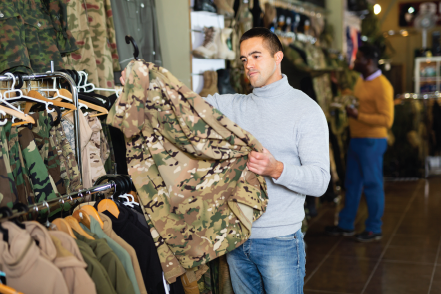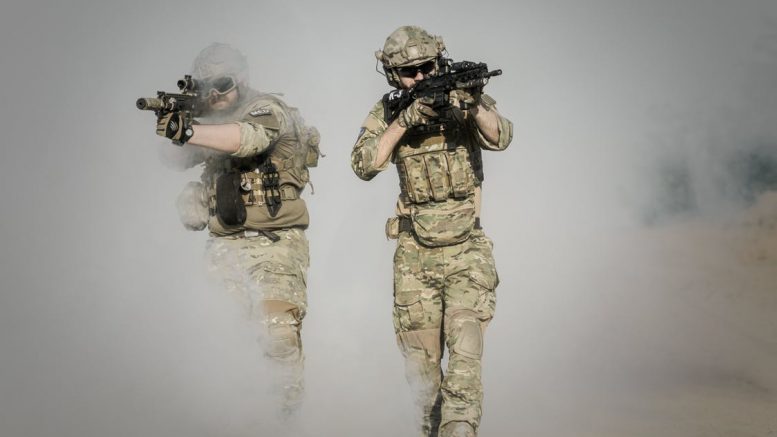
We have previously discussed what Military Grade Textiles are, and some of the features they must have in order to be considered as such. It is obvious that mil-spec textiles must boast high durability in terms of both physical performance and having a robust repertoire of additional protective properties, but they must also be lightweight, breathable, and prevent elemental weathering. These standards are defined in MIL-SPECs, which outline defense specifications and standards established by the Department of Defense (there are currently around 25,000-30,000 active specifications today for anything the military currently utilizes – from textiles, to tires, to hoses, to footwear, etc.). These specifications may ensure the safety of our military personnel, but how are the subjects put to the test before they make it into the field?
Learn about our Custom Military Sewing Capabilities here.
There is a variety of different organizations that have formulated tests in order to help textiles meet mil-specs. Among them are the US Military themselves (MIL-STD-810 is a set of tests), ASTM International (formerly the American Society for Testing and Materials), the AATCC (American Association of Textile Chemists and Colorists). There are further niche tests that can be utilized, but these seem to be the main standards. Rather than putting these materials to test in the field when there is still the potential for failure, the conditions are replicated in controlled environments to test for breaking point. This allows for performance analysis of the mil-spec textile and error corrections to be made prior to mass-utilization in products.
There are many features that need to be tested for in order to make sure that the textile will uphold maximum protection. These include (but are not limited to):
- Heat and Flame Resistance/Retardancy and Extreme Freezing Temperatures: This is to make sure that the textile will not burn when exposed to extreme temperatures or an open flame, and will not freeze when in extremely cold temperatures. The ability for the fabric to protect whatever it is covering (be it a human in the case of a uniform or specialized equipment in the case of a carrying case) is crucial to it’s performance.
- Air Permeability: This is the breathability of the fabric and ease with which air passes through it.
- Physical Testing (Tensile Strength, Abrasion Resistance, Strength, Denier Thickness): This is one of the most important features; the ability for the textile to hold up to weathering, abrasion, and tears. The military requires only the most durable textiles, and by testing the durability beforehand it prevents any unexpected material failures in the field. While testing for fabric durability, it is also important to test for durability of the final product.
- Antibacterial Properties: In most cases, military fabrics will have coatings that prevent bacteria from growing and spreading. This is an ideal feature to have not only in uniforms, but also in rucksacks and backpacks, as it protects what is inside.
- Antifungal Properties: Similarly, fungus can grow in wet and dark areas, such as inside of a closed rucksack that had dampness trapped inside. A textile coating can also prevent this.
This list of features just scratches the surface of what military textiles are tested for. Other features include water resistance, moisture wicking, drying time, and more specific needs.

